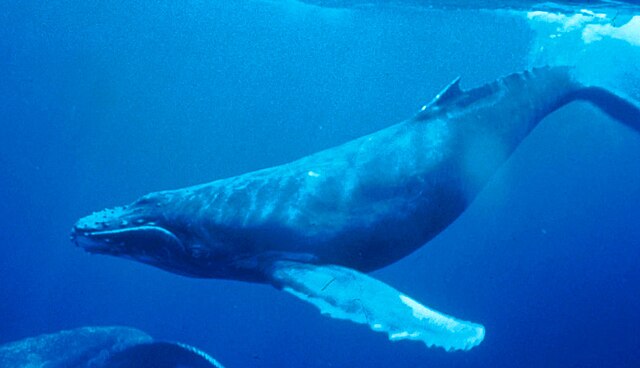Rorquals are the largest group of baleen whales, comprising the family Balaenopteridae, which contains ten extant species in three genera. They include the largest known animal that has ever lived, the blue whale, which can reach 180 tonnes, and the fin whale, which reaches 120 tonnes ; even the smallest of the group, the northern minke whale, reaches 9 tonnes.
Rorqual
Humpback feeding on young pollock off Alaska
Skeleton of the extinct Plesiobalaenoptera hubachi at the Museum für Naturkunde, Berlin
Incakujira anilliodefuego paratype
Baleen whales, also known as whalebone whales, are marine mammals of the parvorder Mysticeti in the infraorder Cetacea, which use keratinaceous baleen plates in their mouths to sieve planktonic creatures from the water. Mysticeti comprises the families Balaenidae, Balaenopteridae (rorquals), Eschrichtiidae and Cetotheriidae. There are currently 16 species of baleen whales. While cetaceans were historically thought to have descended from mesonychians, molecular evidence instead supports them as a clade of even-toed ungulates (Artiodactyla). Baleen whales split from toothed whales (Odontoceti) around 34 million years ago.
Baleen whales vary considerably in size and shape, depending on their feeding behavior.
Eschrichtius, Balaenopteridae
Eubalaena, Balaenidae
Megaptera, Balaenopteridae








